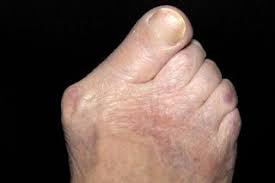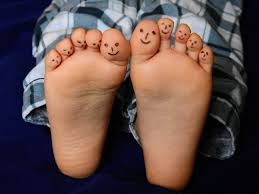Sponsored by Bliss Shoes
We’re bombarded by national/international awareness days/months but here is one closer to the podiatry profession: National Bunion Awareness Day.
Bunions are a scourge for both men and women alike. But this blog is focused on women.
With 38% of women over
30
in the UK alone suffering from
bunions, and with more than 75% of bunion
sufferers embarrassed by their feet
, National Bunion Day (NBD)
has been established to remove the stigma surrounding bunions and to raise
awareness of the problem.
The National Bunion Day website ( www.nationalbunionday.com
) encourages individuals to locate and
visit their local footcare professionals. It links through to the College of
Podiatry, so that visitors to the website are able to locate their local
podiatrist and make an appointment. Betafeet
Podiatry ( www.betafeetpodiatry.co.uk
) should
be your local podiatrist of choice. It’s
worth revisiting a blog Betafeet posted in 2015:
THE RISKS OF HIGH HEELS AND HOW TO AVOID THEM
Author/Blogger Reggie Simpson
01 Dec 2015
'Tis the season ... don't suffer
Whether you work in a formal environment or just have an eye for high fashion, you probably have at least one pair of high heels in your wardrobe. But how often do you wear them?
Many women choose to wear high heels every day for work, and then again at the weekend! This isn’t too surprising, considering they’re a natural confidence booster. They add height and the illusion of great posture, but they can also be detrimental to the health of your feet.
Which conditions could high heels cause?
There are a number of conditions that could occur as a result of high heels. Here are a few of the most common!
Bunions
A bunion is a bone deformity located at the base of the big toe, causing the area to swell.
Bunions are significantly more common amongst women than men and are often associated with tight, narrow, high-heeled shoes. They can be very painful and may result in the need for surgery if not treated.
Muscle or joint ache
The human body was not designed for high heels, so when you wear them it has to compensate. This can often lead to aches and pains in the feet, legs and back.
With excessive wearing of high heels, women may even experience a shortened Achilles tendon, making it impossible to wear flats and causing more discomfort over time.
Foot pains
When you wear high heels, your weight will be balanced on the balls of your feet, putting an unnatural amount of pressure on the area – over seven times as much as when you’re wearing flat shoes!
This extra weight can result in inflammation or even neuroma, as well as corns or bent toes.
How to avoid these issues in the future
Due to the risks of wearing high heels, it’s safe to say that they are not the best footwear for everyday use. Instead, why not use your health as an excuse to shop for some stylish yet safe alternatives?
A sleek pair of black flats will do just the trick for work while a colourful or embellished pair will look great on the weekend.
If wearing heels really can’t be avoided – for example if you’re attending a party, wedding or important meeting where you’ll need to look your best – try to limit their wear for a few hours at a time. You may even wish to purchase a pair of foldable flats that will fit conveniently in most handbags.
As always, be sure to take care of your feet. Stretch and massage them as soon as you take off your high heels.
If you’re concerned about your footwear choices, get in touch with a podiatrist today. Betafeet Podiatry will be able to give you professional advice on the best shoes for your feet.
Click here for a 'Bunion Fact Sheet'!






